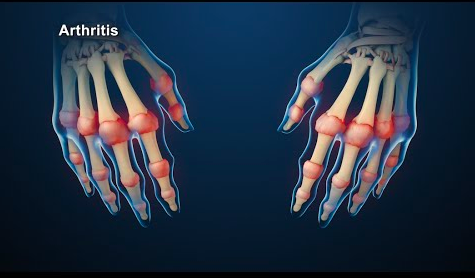Your bones sustain your body and aid in mobility. A joint is the location where two or more bones meet. Joints can move freely, somewhat little, or not at all. Moveable joints are encased in a synovial membrane, which contains synovial fluid that lubricates and feeds joint tissue like articular cartilage. The thick, slick cartilage that covers the ends of the bones enables for easy joint movement. The body’s joints provide flexibility, fine motor control, and assistance with weight support.
Any condition that affects the joints and causes pain or inflammation is referred to as arthritis. The joints most frequently afflicted by rheumatoid arthritis are those in the wrists, hands, knees, ankles, and feet. It typically affects the same joint on both sides of the body. There are periods when the symptoms of rheumatoid arthritis worsen, known as flares, and periods when they improve, known as remissions. It may also have an impact on the body’s other organs, including the digestive system, neurological system, eyes, skin, heart, lungs, and kidneys. Because rheumatoid arthritis is an autoimmune condition, the immune system mistakenly assaults the tissues of the joints and other organs. Here’s how this happens. When immune system white blood cells enter a joint, they release cytokines, which assault the synovial membrane’s cellular components. Other harmful molecules are released by synovial cells as a result of these chemicals. Inflammation inside the joint leads to fluid buildup in the joint, which causes the joint to enlarge. They also induce the synovial membrane to develop new blood vessels and form a thicker area called a Panis, which over time as it expands invades and kills portions of cartilage and bone.
There is no known cure for rheumatoid arthritis, but doctors frequently prescribe different combinations of the following medications that when taken together can reduce inflammation and pain and slow down joint damage. These include non-steroidal anti-inflammatory drugs, or NSAIDs. If left untreated, ankylosis, which is the growing together of bones in the joint, can eventually occur.
DMARDs Physical and occupational therapy, along with low-impact exercise, can increase muscle strength and help keep joints limber for severe rheumatoid arthritis that has not responded to standard DMARDs. If biologic DMARDs, also known as newer drugs called biologics, are not working, doctors may prescribe them. A doctor may advise a surgical procedure, such as a joint replacement procedure (also known as an arthroplasty), joint fusion (also known as arthrodesis), during which the joint is removed and the bones are fused together, and bone grafting. Another surgical procedure for severe rheumatoid arthritis is an ectopy, during which the synovial membrane lining the joint is removed.
Related Searches:
rheumatoid arthritis treatment, rheumatoid arthritis causes, rheumatoid arthritis diagnosis, rheumatoid arthritis blood test, early signs of rheumatoid arthritis, unusual symptoms of rheumatoid arthritis, what are the 4 stages of rheumatoid arthritis, how to cure rheumatoid arthritis permanently.
List of Tags:
patient education, health literacy, bones, skeleton, joints, arthritis, rheumatoid, chronic polyarthritis, disease, inflammation, knee, femur, tibia, tibial, bone, fibula, femoral, fluid, synovial, sciart, nucleus medical media, Rheumatoid Arthritis (Disease Or Medical Condition), Health (Industry), Pain, rheumatoid arthritis, rheumatoid arthritis behandlung, rheumatoid arthritis deutsch, rheumatoid arthritis diet, rheumatoid arthritis doccheck, rheumatoid arthritis early symptoms, rheumatoid arthritis icd 10, rheumatoid arthritis in german, rheumatoid arthritis symptoms, rheumatoid arthritis test.


